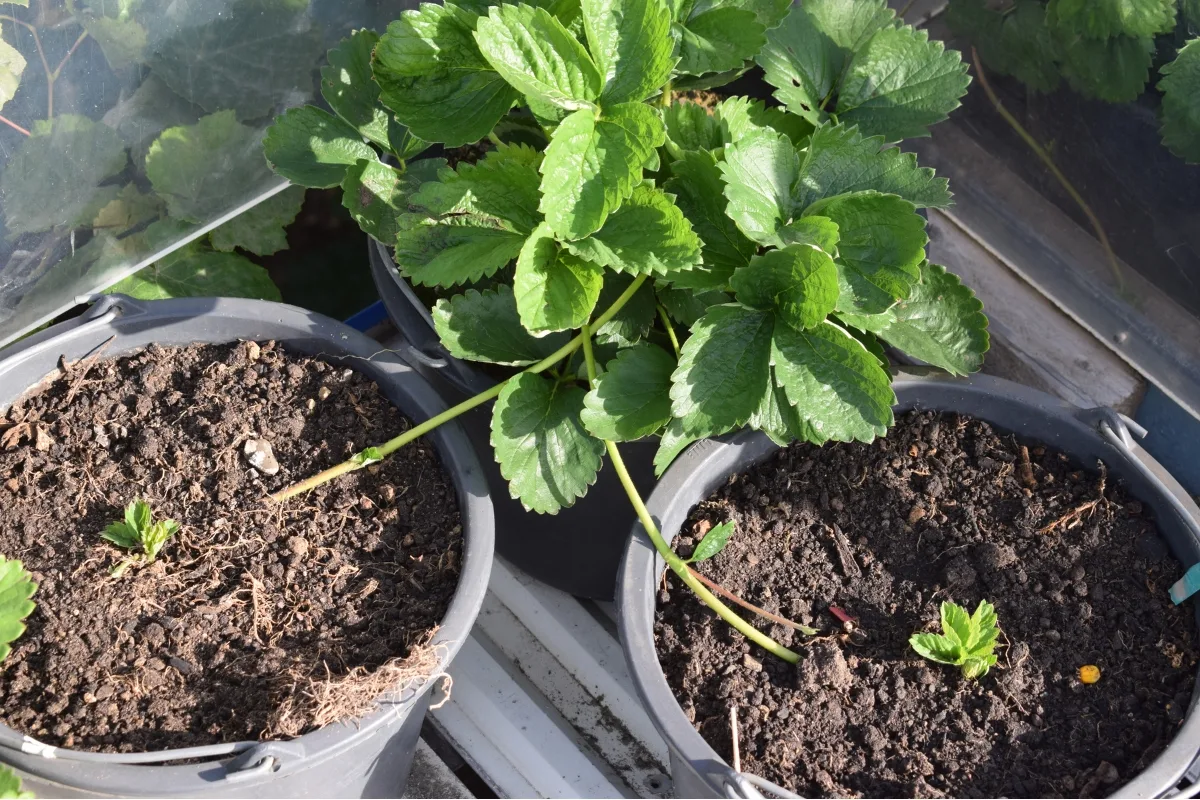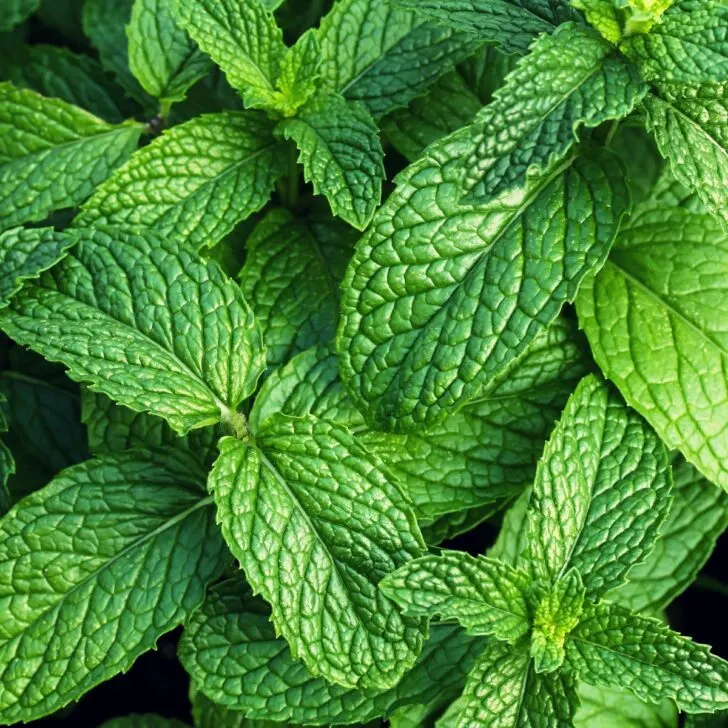Wondering what to do with strawberry runners? Learn when to cut runners from the mother plant and how to root them for more plants!

Strawberry runners are slender, vine-like offshoots that search for a spot to root into the soil. But these plant babies can sap energy from the mother if left intact!
So what do you do with strawberry runners? Should you cut them from the mother plant or let them root? Here's how to decide!
This post contains affiliate links for your convenience. Purchases made through these links may earn me a small commission at no additional cost to you.
Understanding strawberry runners
First things first, what exactly are these runners? Strawberry runners, also known as "stolons," are horizontal stems that shoot out from the base of the strawberry plant. They grow above the soil and can look like long, skinny vines with tiny plantlets forming along its length.

These runners are the strawberry plant's way of reproducing. Instead of relying solely on seeds, strawberries spread by sending out these runners. When a runner touches the ground, it can take root and form a new plant.
But it's not just about reproduction. Runners also play a part in the plant's survival strategy. If the main plant faces tough conditions, these offshoots can establish themselves a little distance away, ensuring the strawberry's legacy continues.
Benefits of allowing strawberry runners to grow
There are a few good reasons why you might want to leave at least a few runners on your strawberry plants.
Natural Propagation
One of the most obvious perks of runners is how they can expand your strawberry patch without much effort on your part. If you've got space and want more strawberry plants, these runners are nature's way of gifting you with more.

Ensuring Genetic Consistency
If you've found a strawberry variety that you absolutely love - be it for its taste, size, or resistance to pests - runners ensure you get more of the exact same thing. Plants grown from runners are genetically identical to the parent plant. So, you're basically cloning your favorite strawberry plant.
Cost-Efficiency
Instead of buying new plants or seeds every season, you can use runners to naturally increase your harvest. If you have a large area that you'd like to cover with strawberry plants, allowing the runners to take root is the best way to multiply them fast!

Strawberry plants start declining in productivity after 3-4 years, so you can pull the older plants as the new ones take root. By consistently rooting one runner from each plant a year, you ensure that your harvest won't dwindle over time.
When to cut strawberry runners from mother plant
While you may think that more strawberry plants are always good, there are times when you might want to rein them in a bit. Letting every runner grow can sometimes be counterproductive.

Here's when and why you might consider cutting the runners from the mother plant.
Energy Conservation
Strawberry plants have a certain amount of energy to go around. If a plant is sending out a ton of runners, it might be diverting energy from fruit production. If you notice fewer berries or smaller-sized fruits, it might be time to check on those runners.

Overcrowding
While expanding your strawberry patch sounds great, there's such a thing as too much of a good thing. If runners are creating new plants too close together, they can compete for nutrients, water, and space. This can stress all the plants out and reduce overall yield.

Aesthetic Reasons
Maybe you have a specific garden design in mind, or you're growing strawberries in a limited space like a container or balcony garden. In such cases, unchecked runners can make things look messy or take up valuable real estate.
If you're growing strawberries in a planter like this one, there's nowhere for the baby plants to root! The runners will just dangle in midair and block out sunlight to the fruiting plants.

Plant Health
Sometimes, runners can show signs of disease or pest infestations before the main plant does. If you spot a problematic runner, it's a good idea to remove it to protect the rest of your garden.
Seasonal Timing
Early spring and late summer are often the best times to assess and trim runners. In early spring, you'll want the plant to focus on establishing itself and producing fruit. By late summer, after the main fruiting season, you can decide which runners to keep for next year's plants.
Tips for cutting strawberry runners
So, you've decided some runners need to go. No worries! With the right tools and a gentle touch, you can trim or remove runners without harming your strawberry plants. Here's how to go about it!
Make sure your pruners or scissors are clean and sharp. This will prevent spreading disease to the mother plant.
Trace the runner back to the main plant. If you're removing the entire runner, cut it as close to the main plant as possible without injuring the primary stem.

If you're trimming a runner but want to keep it for propagation, cut the runner just beyond the last plantlet you want to retain.

If your strawberry runners have already taken root in the soil, you can cut them from the mother plant and they'll continue to grow on their own! There's no need to keep the two connected after the roots form, so go ahead and give them a snip.
How to plant strawberry runners
If you'd like to try propagating strawberry runners so you can plant them elsewhere in the garden, there are a few different methods.
Plant while still attached to mother
For the best results, plant the runner in soil near the mother plant while it's still attached. It can be difficult for the plantlet to survive on its own without a strong root system, so the mother can provide nutrients while the baby gets a firm footing.

The easiest way to do this is simply to place a small pot of soil next to the mother plant. Gently pin the plantlet to the top of the soil with a landscape staple or floral wire, being careful not to bury the crown.

Once the new plant sets roots, you can separate it from the mother and transplant it elsewhere in the garden.
Plant the cut runners in soil
If you've already cut the runners off the mother, you can still try to propagate them and see if they'll take root. Just fill a small container with well-draining potting soil and pin the plantlet to the surface.

Place the pot in full sun and keep it watered. After a few weeks, give it a gentle tug to see if it's started to set roots. If there's resistance, roots have likely formed.
Rooting strawberry runners in water
Another method for propagating strawberry runners is in water. Place the bottom of the plantlet in water with the leaves above the surface. I like to use a landscaping staple over a small jar of water to keep it elevated.

Make sure to keep the water level high so the bottom of the runner is submerged. Place the glass in a sunny spot, and watch for fine, white roots to form in a few weeks.
Now that you know what to do with strawberry runners, you can decide whether you want to increase your patch or increase your yields from existing plants. The choice is yours!






